 Humans
Humans  Humans
Humans  Animals
Animals 10 Animals That Humiliated and Harmed Historical Leaders
 History
History 10 Most Influential Protests in Modern History
 Creepy
Creepy 10 More Representations of Death from Myth, Legend, and Folktale
 Technology
Technology 10 Scientific Breakthroughs of 2025 That’ll Change Everything
 Our World
Our World 10 Ways Icelandic Culture Makes Other Countries Look Boring
 Misconceptions
Misconceptions 10 Common Misconceptions About the Victorian Era
 Mysteries
Mysteries 10 Strange Unexplained Mysteries of 2025
 Miscellaneous
Miscellaneous 10 of History’s Most Bell-Ringing Finishing Moves
 History
History 10 Great Escapes That Ended Right Back in Captivity
 Humans
Humans 10 Everyday Human Behaviors That Are Actually Survival Instincts
 Animals
Animals 10 Animals That Humiliated and Harmed Historical Leaders
 History
History 10 Most Influential Protests in Modern History
Who's Behind Listverse?

Jamie Frater
Head Editor
Jamie founded Listverse due to an insatiable desire to share fascinating, obscure, and bizarre facts. He has been a guest speaker on numerous national radio and television stations and is a five time published author.
More About Us Creepy
Creepy 10 More Representations of Death from Myth, Legend, and Folktale
 Technology
Technology 10 Scientific Breakthroughs of 2025 That’ll Change Everything
 Our World
Our World 10 Ways Icelandic Culture Makes Other Countries Look Boring
 Misconceptions
Misconceptions 10 Common Misconceptions About the Victorian Era
 Mysteries
Mysteries 10 Strange Unexplained Mysteries of 2025
 Miscellaneous
Miscellaneous 10 of History’s Most Bell-Ringing Finishing Moves
 History
History 10 Great Escapes That Ended Right Back in Captivity
10 Negative Effects The Meat Industry Has On The World
It’s no surprise that a lot of people do not like the meat industry. However, most discussion about the harm of the meat industry circles around the torment of individual animals or vague platitudes about how it is hurting the world. The individual suffering of animals is significant and should not be discounted, but it helps to look at the big picture behind opposition to the meat industry. Not only is the meat industry killing tons of animals, but it has profound and negative impacts on the entire world. These impacts don’t just hurt animals; they can damage the whole human race. Here are 10 of the worst ways that the meat industry is destroying our planet, with the raw facts to back them up.
10 It’s A Leading Cause Of Deforestation

Deforestation is one of the biggest problems facing the world today. Every second, 1–2 acres of rain forest are cleared, mostly in the Amazon. With the staggering loss of rain forest comes a variety of negative effects. Deforestation increases both climatic instability and the amount of greenhouse gas in the atmosphere. The destruction of the Amazon rain forest has also contributed to a staggering loss of biodiversity, with 137 species of animals and plants being lost every day. Not only is this extremely harmful to the planet, but it also has a hypothetical impact on the human race. With that many plant species being lost, it is very possible that we are losing possible new drugs and cures to common diseases.
Most people are aware that deforestation is bad and will have a huge effect on our future, but why is all the forest being destroyed? Shockingly, the major cause of Amazonian deforestation is the meat industry. Cattle require huge amounts of land to be raised, and that land has to come from somewhere. Since Brazil is one of the world’s biggest beef exporters, their economy is partly reliant on the meat industry. As such, close to 70 percent of deforestation occurs as a direct result of the increasing demand for beef. The meat industry is also used as a pretense for rapid land speculation on recently cleared forests. Most of this beef goes to the US and first-world countries.
Various groups have attempted to stop the practice. When a Greenpeace report exposed the truth about deforestation, the World Bank International Finance Corporation withdrew a $90 million loan from Bertin, the second-largest meat producer in Brazil. This forced Bertin to stop growing cows on deforested land. Since the IFC is so big, they did not fear repercussions. Others aren’t so safe. Over 1,000 activists have been killed in Brazil while protesting the deforestation practices. Most murders have gone untried, and the killers have walked free. Among the dead are various US nationals and even some nuns who dared to speak out against the meat industry.
9 It Uses 80 Percent Of US Antibiotics
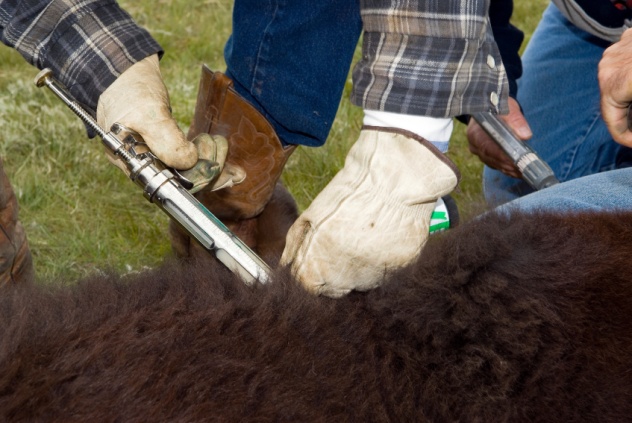
The meat industry is obviously dependent on keeping their animals alive until they’re ready for slaughter. That means that the industry needs tons of antibiotics to fight off various diseases that could plague livestock. Farmers all around the world inoculate their animals, but by far the biggest users of antibiotics are US meat producers. Since US meat is shipped around the world, this causes some ethical concerns.
When the numbers are crunched, 80 percent of all antibiotics produced in the United States goes to the meat industry. Cows, hogs, and other farm animals are consuming over 28 million pounds of drugs a year. That’s an absolutely astounding number, especially considering that scientists believe that the US (and eventually the whole world) could soon face an antibiotics shortage. This shortage is beginning even now. In the short term, the overuse of antibiotics in the meat industry works to drive up the price of life-saving drugs that are needed in the country’s hospitals.
An even greater threat to the world comes from antibiotic overuse. When our food already has antibiotics in it, bacteria get a testing ground to evolve into antibiotic-resistant superbugs. Since animals are given the same drugs that would otherwise go to humans, the superbugs that develop in the animals will automatically be resistant to the drugs that doctors use to treat human patients. By the time that we recognize that a superbug exists, it will be too late. The widespread consumption of antibiotic-treated meat will provide a vector to infect large swaths of the world population.
8 Massive Bribes To US Senators And Reporters
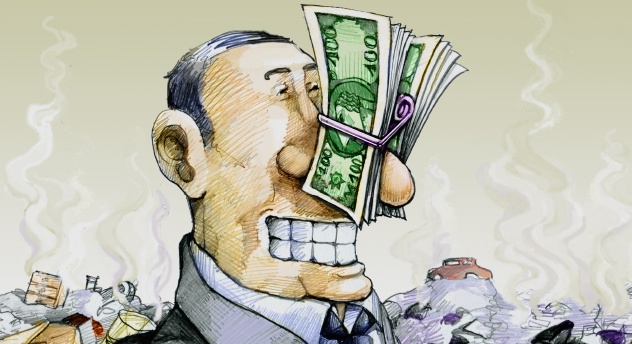
Since meat is such a big part of national economies, the industry is tied up in politics. This is especially true in the United States, where the meat industry extends their influence out of the supermarket and into the political realm. In the US, where candidates are not forced to disclose their monetary donations, the meat industry donates $10.8 million per year to political campaigns and spends almost $7 million directly lobbying federally elected officers. The coziness between American political leaders and meat lobbyists has caused a variety of problems.
First of all, it has been a huge force in perpetuating myths and misinformation about the meat industry. In 1977, Congress attempted to pass guidelines recommending the correct consumption of various food groups. When meat consumption was not listed high enough, lobbyists fought to either increase the listed meat consumption or to completely shoot down the project, and they got what they wanted. Years later, when the FDA released the famous food pyramid, lobbyists fought to make it seem like meat was the most important part of one’s diet.
The relationship between meat producers and the federal government has also led to the meat industry receiving massive government subsidies, far outstripping any other food industry. Meat producers have also had reporters attack any sort of scientific study that recommends fewer meat servings.
This sort of craziness has jumped over the ocean into the United Kingdom, as well. Nina Teicholz, a vehemently pro-meat author suspected of taking money from the meat industry, recently published a report in the British Medical Journal criticizing USDA reports about the negative effects of eating too much meat and denying that sustainability was a necessary consideration. This was in a peer-reviewed journal, showing that ignorance of the meat industry’s problems is not solely confined to the US. All of this allows the meat industry to continue their practices unchecked.
7 It’s A Leading Contributor To Droughts
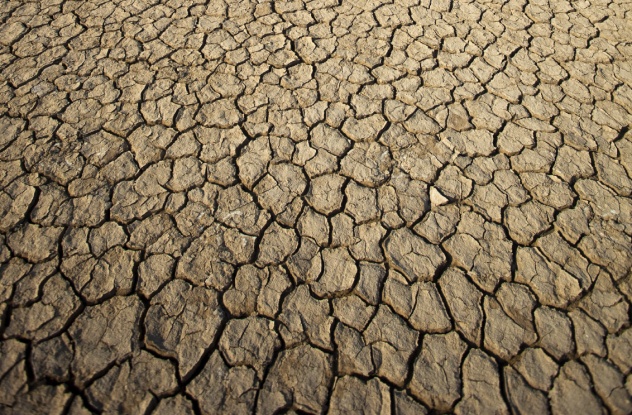
Obviously, the meat industry needs to feed its animals until slaughter. Full-grown cows and pigs consume massive amounts of water, as does producing the feed required to keep them alive. Just how much water is required for meat? Every pound of beef uses a staggering 2,500 gallons of water, which is roughly equal to taking a shower every day for six months. Most of the water goes into growing the food needed to keep the animals alive and at peak meat-giving weight; only 2 percent of it is drank by the cows. In the United States, half of all water goes to supporting animal agriculture.
As the world population continues to increase, this huge water use will cause significant problems. A case study in the future of water shortage is California. California experienced the biggest drought in history over the past few years, resulting in panicked conservation measures and concerned politicians. California’s water use reveals an interesting fact: Half of the state’s water use per person goes to meat products. By cutting out meat products, Californians would not have as intense of a water crisis as they do.
The trend is especially pronounced in California, but it is occurring worldwide. NASA reports show that water levels are dropping all over the world, leading toward a global drought. Countries all over the world are experiencing significant crop losses, and record-breaking drought conditions are not uncommon globally. On a global level, the meat industry consumes 34–76 trillion gallons of water annually. This means that the animal agriculture industry accounts for one-third of the world’s total water consumption, and it is almost completely unregulated. As the world experiences acute climate change and water shortages, this will begin to cause serious harm. While shortening one’s shower time may save 20 gallons, that’s nothing compared to the 2,500 gallons used for 1 pound of beef, which affects the whole world.
6 It Uses Almost Half Of The Land On Earth

Along with the water use, livestock also take up a lot of land. In some cases, this is land for the animals themselves, but in cases where the animals are kept in cages, it comes from using the land to grow feed. Using beef as an example, every cow uses a net total of 2–5 acres of land, depending on the farms. All of that adds up. At current, the meat industry uses 45 percent of the world’s land mass. In the United States, livestock production takes up more than half of the overall land mass. The US can handle that for now, but as the world population grows and demand increases, more and more land will have to be converted across the world.
The overuse of land contributes to desertification. One-fifth of the world is experiencing desertification crises. When a piece of land is desertified, it becomes unusable for any sort of agriculture. The deserts of the world are growing, and one of the key contributors is livestock production and overgrazing. By using up so much of the land, overgrazing is also decreasing the biodiversity of regions and doing irreparable ecological harm. For example, in Central Asia 8,000–10,000 square kilometers (3,000–4,000 mi2) undergo desertification every year, most of it due to use of the land for livestock. With 168 countries threatened by desertification crises, the meat industry’s land use is only accelerating the problem.
5 It Diverts Grain From Countries That Could Use It

World hunger is a very real problem, and it continues to increase. About 800 million people are undernourished. Even in developed countries, malnourished people count for 12.6 percent of the population, while in Africa, one out of four people experience hunger problems. Hunger accounts for 45 percent of deaths for children under five years old. Thousands of organizations are trying to end world hunger, but they all hide a secret. The world has enough food; it’s just not going to people.
It’s no secret that cows and other livestock require a lot of food to grow to full size. Accurately estimating the amount of feed required for every pound of meat is nearly impossible, but it falls somewhere between 1–3 kilograms (2–6 lb) of feed per pound of finished meat. This means that meat provides fewer calories than it takes to produce it. If the raw grain used for feed went into producing edible food for humans, those calories would directly go to hungry stomachs. Of the countries that are experiencing hunger problems, 82 percent use sizable portions of their grain to feed cows and pigs that will be eaten in first-world countries.
So how do the numbers break down? In 2008, two billion tons of grain were consumed, but only half of that went directly to humans. Some of that grain went to biodiesel or to alternative energy. Most of the excess grain went to livestock, which have an incredibly low calorie yield for how much grain they consume. With the grain consumed by their livestock, the United States alone could feed 800 million people, and that is just one industrialized country. If we made a total conversion away from the livestock industry, the world would produce enough grain to feed 10 billion people, which is the projected population of the world in 2050. To meet the population demand in 2050, the world would have to double its overall food production over the next decade, but using all the grain to feed people directly would end the hunger problems today and in the future without having to double efforts.
4 It Increases Worldwide Obesity And Cancer Risk

The meat industry perpetuates the myth that meat is good for you. However, the truth is the complete opposite. The adverse health effects of meat have yet to be addressed, and the worldwide consumption of meat products has actually increased over the years due to better advertising by meat producers.
Recent studies have shown various negative effects of meat consumption. Red meat specifically is linked to an increased chance of cardiovascular disease and decreased heart health. Beyond the risk of obesity, eating processed meats has also been recently shown to (very slightly) increase the risk of certain types of cancer.
The common refrain is that meat is necessary to give enough protein for healthy development. Meat industries use their sizable resources to bribe government officials into pushing incorrect nutritional guideline and perpetuating this myth. The average first-world consumer consumes twice as much protein as they actually need, mostly due to inaccurate advertising and publications about nutrition. When it comes down to it, vegetables and fruit give the essential protein content necessary for maintaining health, without risk of obesity or cancer. Unfortunately, the widespread influence of meat producers has spread the myth that dangerous meat products are the ideal form of protein intake.
3 It’s A Leading Cause Of Ocean Dead Zones And Water Pollution
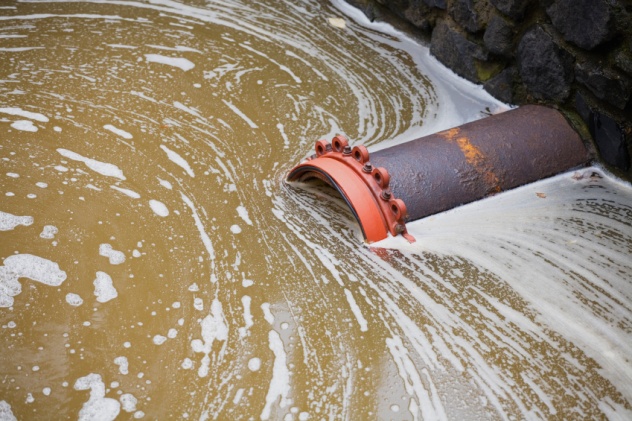
We’ve established that the meat industry causes considerable damage to land, but one of its biggest effects is in the ocean. Fishing is a wildly unsustainable industry that is even contributing to mass extinction. Currently, the meat industry is also polluting our oceans to the point that oceanic dead zones are growing more each year. A dead zone occurs when there is not enough oxygen in the water or there are too many other chemicals, which causes the animals in the zone to suffocate and die. The biggest known dead zone is in the Gulf of Mexico. Runoff from the Mississippi River has caused a 15,000-square-kilometer (6,000 mi2) swath of water to be completely uninhabitable for oceanic life.
The biggest contributors to oceanic dead zones are meat producers. Most of the damage comes from animal waste. Every year, livestock produce 130 times as much waste as humans. Unfortunately, waste management practices dump a lot of that into the oceans, which destroys marine biodiversity. Even as that is happening, many sources of water are drained solely for livestock production. The water that does remain is constantly polluted due to methane production from animals and improper waste disposal techniques. This directly causes problems for people living in locations where water is gradually becomes polluted by livestock byproduct.
Ocean dead zones also cause big dangers for humans. Fish or other marine creatures from affected areas can be toxic and have adverse health effects if eaten, but the problem runs deeper than that. Oceanic dead zones are a leading cause of biodiversity loss and ecosystem destruction. Combing dead zones and overfishing is rapidly killing marine wildlife. Current models show that at the rate at which oceans are degrading, we may see oceans with almost no fish by 2048. Seafood will be a thing of the past, along with the wonderful biodiversity that we now see.
2 It’s One Of The Leading Causes Of Mass Extinction
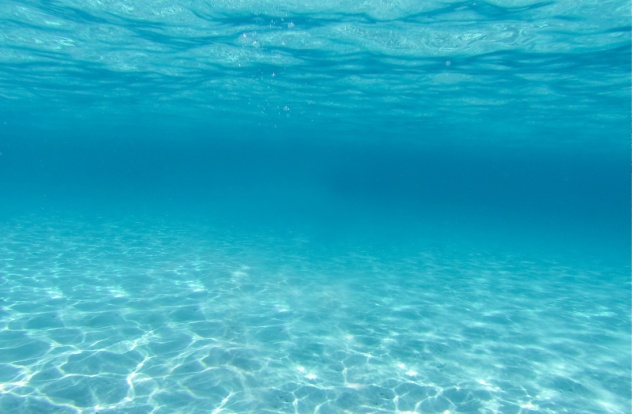
Earth is losing species at an alarming rate. Even given conservative estimates of species loss, the planet is experiencing the worst mass extinction in the past 65 million years. Currently, the extinction rate for species is 100 times faster than we would expect from natural models. This is without a doubt being caused by humans, but many factors play into this alarming reality. One of the leading causes is animal agriculture.
Nowhere is this more pronounced than in the oceans. As mentioned above, we could be facing fishless oceans by 2048, for more reasons than oceanic dead zones. Fishing is wildly unsustainable. Every year, fishermen pull 90 million to 100 million tons of fish from the ocean, leading to 75 percent of the world’s fisheries being overexploited or completely drained. Besides the fish, industry practices are also killing off other marine animals at an alarming rate. Because fishing nets and other methods are imprecise, for every pound of harvested fish, five times’ worth of unintentionally caught marine animals are pulled up. This equals 2.7 trillion animals being killed every year by commercial fishing, including thousands of whales, dolphins, sharks, and seals. These animals are unintentionally caught but die nonetheless. Fishery depletion and the staggering amount unintentionally caught animals has led to the start of a mass oceanic extinction.
The situation is not much better on land. Ecologists are not concerned about the cow, pig, or chicken ever going extinct, but meat industry practices have accelerated the current mass extinction with their side effects. As mentioned above, destruction of the Amazon rain forest to make way for cattle ranches causes about 137 species extinctions a day. In the United States, farmers have hunted indigenous predators to extinction. In 2012, the state of Washington completely killed off its wolf population to protect beef farms. USDA “wildlife services” have sponsored large hunts to kill predators. Combined, the land and oceanic extinctions show that the meat industry is contributing to a possible sixth mass extinction event in Earth’s history.
1 It Massively Contributes To Global Warming
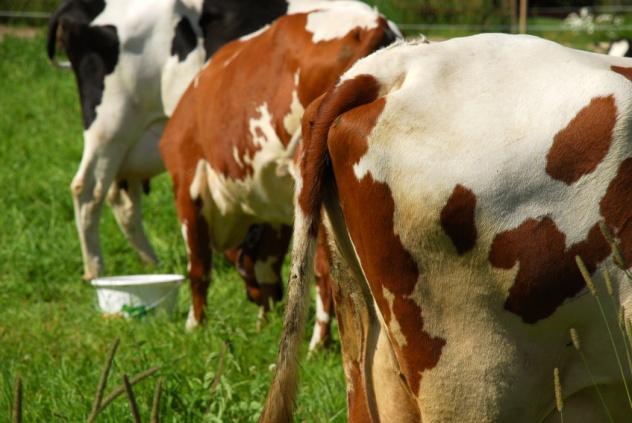
Of all the things discussed on the list, the one that has the greatest long-term effect on the world is global climate change. Politicians and popular scientists have pushed the idea that carbon emissions cause the biggest impact on global climate change and have called for cleaner energy and renewable resources. Although this a wonderful goal, carbon emissions are not the most deadly greenhouse gas. Methane and nitrous oxide are far worse.
Methane is a natural byproduct of livestock production. It comes from waste and emissions from the animals themselves. When released into the atmosphere, methane is more deadly than any carbon dioxide emission. A single cow produces nearly 150 gallons of methane per day. Animal agriculture also produces 65 percent of all human-related nitrous oxide emissions. The damage that nitrous oxide causes is not well-known to the public, but it has 296 times the global warming potential of carbon dioxide.
Even if we look at carbon dioxide emissions alone, the amount of carbon dioxide produced in relation to animal agriculture is staggering, accounting for 51 percent of all emissions. Animal agriculture contributes 18 percent of all greenhouse gases, compared to only 13 percent from transportation. That means that you can drive all the polluting vehicles you want if you completely cut out meat. A vegan diet has a much smaller carbon footprint (1/18th) than a meat-eating diet, and a vegetarian diet is one-sixth smaller. Most of the items mentioned above are somehow linked to global climate change. All of the problems are connected by the unsafe and unsustainable practices of the meat industry, which is slowly destroying our world.
Zachery Brasier is a physics student and vegetarian who likes to write on the side and is very interested in environmentalism and the impacts of the meat industry on our world.








